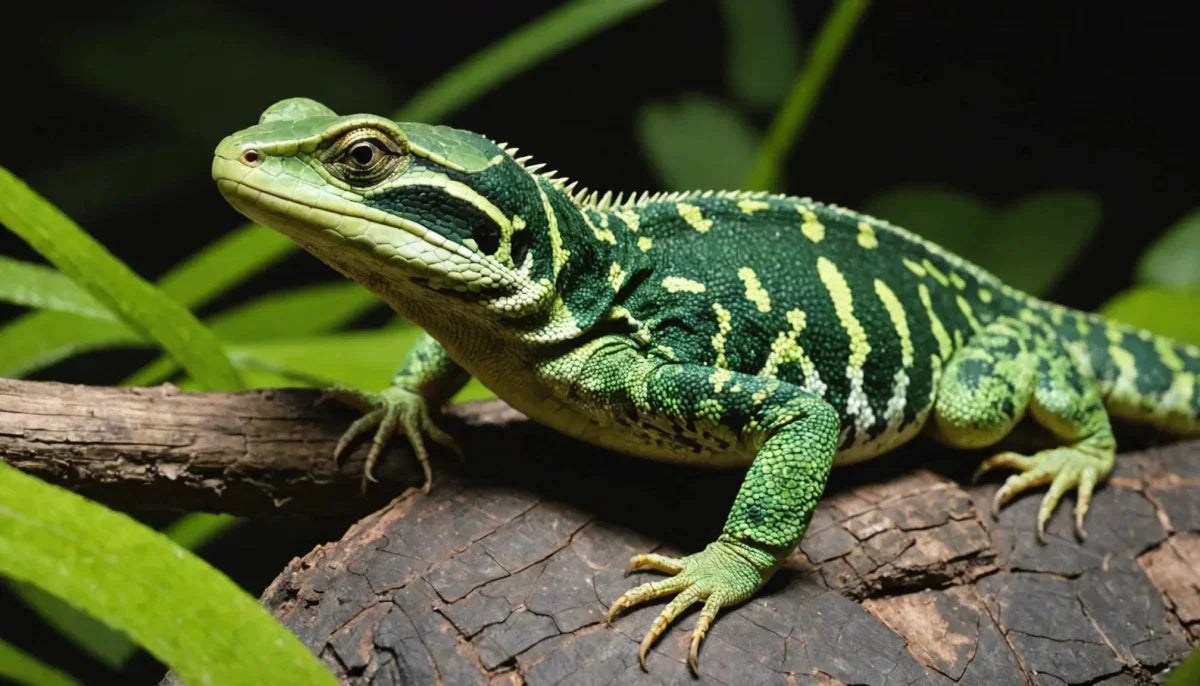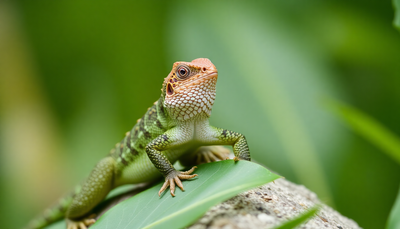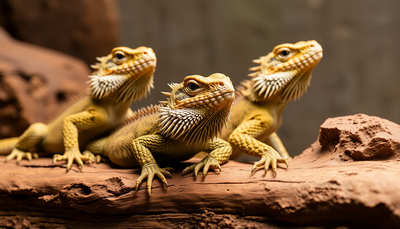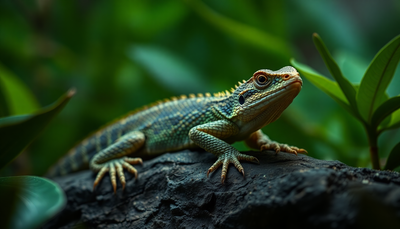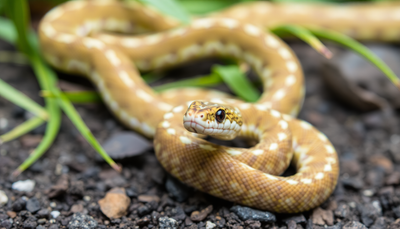Delve into the captivating world of reptiles

With the latest reptile research, where groundbreaking discoveries and fascinating insights await. From the depths of the rainforests to the vast deserts, scientists are unraveling the mysteries of these ancient creatures like never before. This research not only sheds light on the evolutionary history of reptiles but also offers valuable information for conservation efforts and understanding our ecosystem.
Join us as we journey through the realms of crocodiles, snakes, lizards, and turtles, exploring their behaviors, habitats, and adaptations in the face of environmental changes. Stay tuned as we unveil the remarkable findings that are shaping our understanding of these remarkable cold-blooded creatures and their crucial role in maintaining the delicate balance of nature.
Recent Discoveries in Reptile Research
New Species Identification
Discovering new species is always an exciting development. Researchers have recently identified several new species of reptiles, adding to the diversity of these fascinating creatures on our planet. These new species include the vibrant Rainbow Skink found in the lush rainforests of South America and the agile Sand Racer Snake discovered in the arid deserts of Africa.
Technological Advancements in Studying Reptiles
Advances in technology have revolutionized the way researchers study reptiles. From GPS tracking to drones, scientists now have a plethora of tools at their disposal to observe and monitor reptiles in their natural habitats. These technological advancements have provided unprecedented insights into the lives of these elusive creatures. For instance, the use of thermal imaging cameras has allowed researchers to study the nocturnal activities of reptiles without disturbing their natural behavior, offering valuable data on their habits and interactions.
Insights into Reptile Behavior
Studying reptile behavior has always been a challenging task, given their often solitary and elusive nature. However, recent research efforts have shed light on various aspects of reptile behavior, from mating rituals to hunting strategies. By understanding more about how reptiles behave, researchers can better protect and conserve these species for future generations. Recent studies on the social behavior of Gila Monsters have revealed intricate communication patterns through subtle body language and chemical signals, highlighting the complex social dynamics within reptile populations.
The Future of Reptile Research
As technology continues to advance, the future of reptile research holds even more promise. Researchers are exploring the use of artificial intelligence to analyze vast amounts of data collected from tracking devices and cameras, allowing for more comprehensive studies on reptile movement patterns and ecological roles. Additionally, collaborations between biologists and engineers are leading to the development of innovative tools like bio-inspired drones that mimic the flight patterns of birds to study aerial reptiles with greater precision.
Recent discoveries and technological advancements in reptile research are opening new doors to understanding these enigmatic creatures. By unraveling the mysteries of new species, harnessing cutting-edge technologies, and gaining insights into their behavior, researchers are not only expanding scientific knowledge but also paving the way for enhanced conservation efforts to safeguard reptiles and their habitats for generations to come.
Challenges and Conservation Efforts
Threats to Reptile Populations
-
Habitat Loss and Fragmentation: The destruction and fragmentation of natural habitats due to human activities such as urbanization, agriculture, and deforestation pose a significant threat to reptile populations worldwide. This results in loss of crucial nesting sites, foraging grounds, and shelter, leading to declines in reptile numbers.
-
Climate Change: The changing climate patterns, including rising temperatures and altered precipitation levels, impact reptiles by affecting their behavior, physiology, and distribution. Shifts in temperature can disrupt breeding cycles, alter sex ratios in populations, and force reptiles to migrate in search of suitable conditions.
-
Illegal Wildlife Trade: Reptiles are often targeted for the exotic pet trade, traditional medicine, and luxury goods, leading to overexploitation of vulnerable species. Illegal trafficking not only decimates wild populations but also contributes to the spread of diseases and invasive species.
Conservation Initiatives
-
Establishing Protected Areas: Creating and effectively managing protected areas such as national parks, wildlife reserves, and marine sanctuaries is crucial for conserving reptiles and their habitats. These designated areas offer refuge to diverse reptile species and help maintain ecological balance.
-
Habitat Restoration Programs: Implementing habitat restoration projects involves restoring degraded ecosystems, planting native vegetation, and removing invasive species to revive essential reptile habitats. These efforts enhance biodiversity, improve ecosystem services, and support the recovery of threatened reptile populations.
-
Captive Breeding and Reintroduction Efforts: Conservation organizations and zoos conduct captive breeding programs for endangered reptile species to prevent their extinction. Reintroducing captive-bred individuals into the wild helps bolster wild populations, restore genetic diversity, and ensure the survival of imperiled species.
Future Directions in Reptile Conservation
-
Increasing Public Awareness: Raising awareness about the importance of reptiles in ecosystems and the threats they face is essential for garnering public support for conservation initiatives. Education campaigns, outreach programs, and community engagement can foster a culture of conservation and encourage responsible behavior towards reptiles.
-
Enhancing Cross-border Conservation Collaboration: Collaborative efforts among countries are necessary to address transboundary conservation challenges and protect migratory reptile species that traverse international boundaries. Sharing resources, data, and expertise can facilitate coordinated conservation strategies and promote regional conservation agreements.
-
Implementing Sustainable Development Practices to Protect Reptile Habitats: Balancing conservation goals with sustainable development is crucial for ensuring the long-term survival of reptiles and other wildlife. Adopting sustainable land-use practices, promoting eco-friendly technologies, and integrating conservation into development planning can help safeguard reptile habitats while supporting human well-being.
Impact of Reptile Research on Society
Educational and Scientific Contributions
Reptile research has significantly contributed to our understanding of biodiversity and ecosystems. Through studying reptiles, researchers have been able to uncover valuable information about their behavior, physiology, and ecological roles. This knowledge is crucial for conservation efforts and helps in developing strategies to protect endangered species. Furthermore, research on reptiles has led to breakthroughs in medical science, with compounds from reptiles being used in developing new drugs and treatments for various diseases. The study of reptiles has also provided insights into evolutionary biology and has helped in understanding ancient ecosystems, showcasing the interconnectedness of life on Earth.
Economic and Ecological Importance
Reptiles play a vital role in maintaining the balance of ecosystems. By studying their interactions with other species and their environment, researchers can assess the health of ecosystems and identify potential threats. Understanding the economic value of reptiles, such as in ecotourism and pharmaceutical research, highlights their importance beyond their ecological role. Additionally, reptiles contribute to pest control in agricultural settings, reducing the need for harmful pesticides. Research on reptiles has also shown the impact of climate change on their populations, emphasizing the urgency of conservation efforts to mitigate these effects and preserve biodiversity.
Public Perception and Awareness
Reptile research has also influenced public perception and awareness. By sharing research findings through various platforms, researchers have helped educate the public about the importance of reptiles in nature. This increased awareness can lead to better conservation practices and support for policies that protect reptile habitats. Moreover, engaging the public in citizen science projects related to reptiles fosters a sense of community involvement in conservation efforts, leading to a more sustainable approach to wildlife preservation. The portrayal of reptiles in media and popular culture has evolved due to scientific research, dispelling myths and fostering appreciation for these creatures.
The impact of reptile research on society is multifaceted, ranging from educational and scientific contributions to economic and ecological importance. By enhancing public perception and awareness, researchers are paving the way for a more informed and conservation-conscious society that values and protects these fascinating creatures. Continued research and collaboration across disciplines will be crucial in ensuring the long-term conservation of reptiles and their habitats.
Conclusion
The latest reptile research has unveiled fascinating new insights into the world of these ancient creatures. From understanding their unique behaviors to uncovering their vital role in various ecosystems, this research highlights the importance of continued exploration and conservation efforts to protect these remarkable animals for future generations. As scientists delve deeper into the mysteries of reptiles, one thing is certain - there is still so much more to learn and discover about these incredible creatures.


